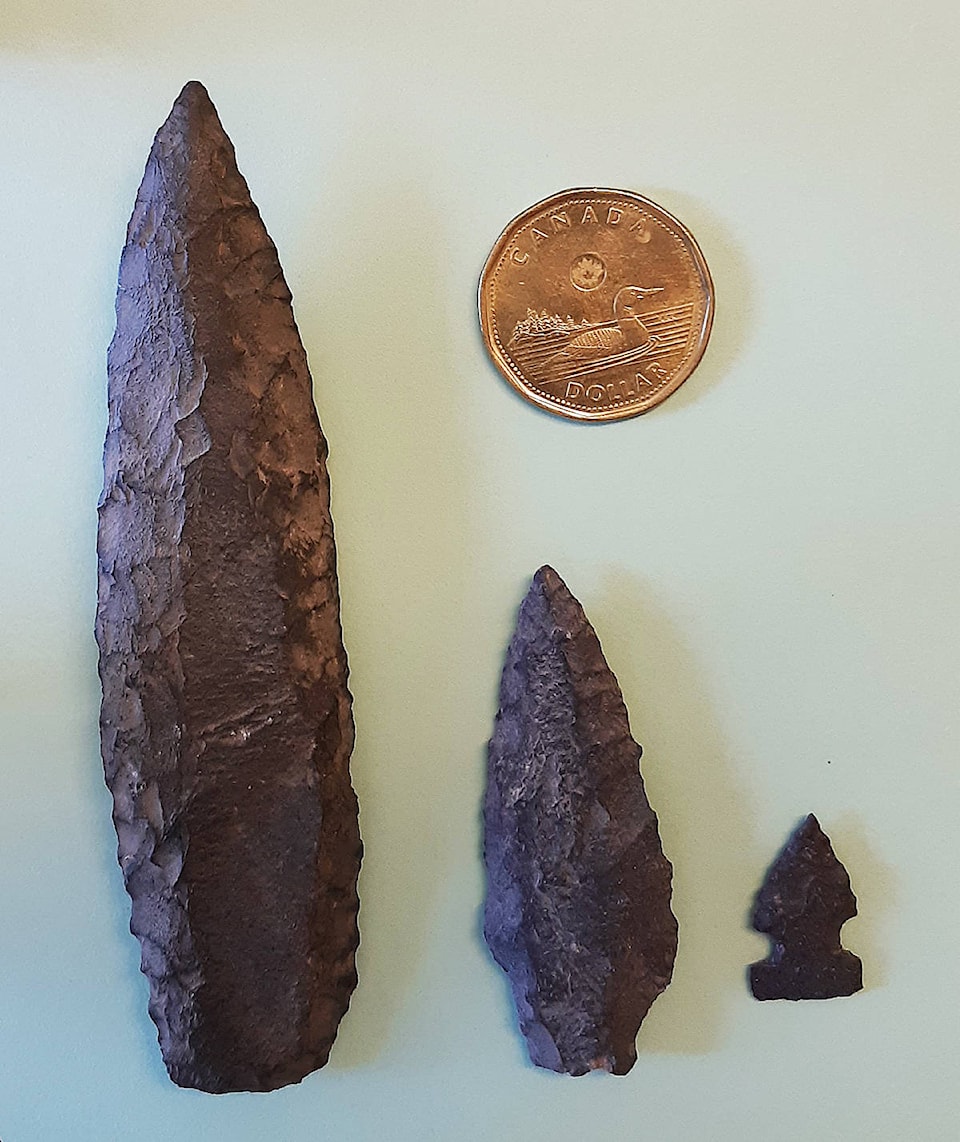Maple Ridge spans the unceded territories of two First Nations – Katzie and Kwantlen.
Their stories are a valued part of the Maple Ridge Museum and Archives and we hold in our collections many reminders of their ancient lifeways.
The stone tools used by First Nations before contact have fascinated non-native cultures for many generations.
They are mysterious and we struggle to sort out what they were used for as, most often, the part we find had been attached to other parts made of more perishable materials, so we are missing important clues.
Given that these stone tools are indisputably the product of First Nations activity, collections at museums are held in trust for the nation of record. Most museums have relationships with the nations whose territories they cover and we are no exception.
Occasionally, we are the recipients of collections made by non-native people in the course of their lives.
We received a large one a few years ago that was collected by a man named Jim Davison, who, as a young man, would ride his horse north from his home onto the Pitt Polder dikes and keep his eye on farmer’s fields when a combination of ploughing and rainfall had exposed stone tools at the surface.
He found all of the items between 1958 and 1960 and took them home.
Fortunately for us and the Katzie people we hold them for, he recognized the importance of the items and the information they represented. He sorted and stored his finds by area with notes about the specifics. He kept those items with him for his whole life, and when he passed away in the B.C. Interior in 2016, he made sure to include the collection in his will with instructions to bring it to us at the museum.
There were 525 items in all, from tiny arrowheads to large carved stones.
Most people aren’t that focused or diligent. They bring an item home – excited to show friends and family – but soon the novelty wears off and the item goes on a shelf, then in a box, then to an attic (if we’re lucky), or to the landfill (if we’re not), where it can survive to confuse archaeologists in the future.
This is all a perfectly natural process but it is wrong and we need to change our habits.
Once an item is removed from its place of origin, it immediately loses the information about any items it was buried with. If even the most basic information about its source is lost, it becomes little more than a sharp rock.
Worse yet, there are people who let their enthusiasm for such finds lead them to digging holes in archaeological sites, which destroys unique and irreplaceable information with every shovel-full.
The practice is referred to as “pot-hunting” after the people who ruined many archaeological sites in the American southwest seeking whole clay pots they could sell.
We have tools today that can replace picking up prehistoric artifacts and taking them home. There is a camera in our pocket. Record your find and its location – take your selfie – then report the find to the museum.
We will welcome and record your images and your story and we will report the find to Katzie First Nation so that their archaeological team can investigate.
Your find could result in an excavation that provides us all with many new stories from the past.
– Val Patenaude is director of the Maple Ridge Museum
and Archives.
